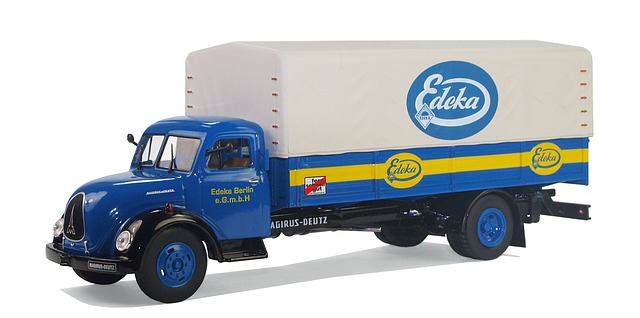Powering a truck’s battery system through solar energy is a sustainable and cost-effective solution for modern transportation needs. This article delves into leveraging solar power to charge your truck’s battery, offering a comprehensive guide from understanding the basics of solar energy to ensuring efficient and reliable power generation. We’ll cover key aspects such as assessing your truck’s battery requirements and capacity, selecting appropriate solar panels for maximum energy absorption, installing a solar charge controller, and wiring your truck safely for integration. Additionally, we’ll provide tips on optimizing the positioning and maintenance of your solar panels to enhance efficiency. For troubleshooting common issues in these systems, our guide serves as an essential resource for anyone looking to harness the power of the sun to keep their truck’s battery fully charged.
- Understanding Solar Power for Truck Battery Charging
- Assessing Your Truck's Battery Requirements and Capacity
- Selecting the Right Solar Panels for Optimal Energy Harvest
- Installing a Solar Charge Controller to Regulate Power Flow
- Wiring Your Truck: A Step-by-Step Guide for Safe Integration
- Maximizing Efficiency: Tips for Positioning and Maintaining Solar Panels
- Troubleshooting Common Issues in Solar-Powered Truck Battery Systems
Understanding Solar Power for Truck Battery Charging

When harnessing solar power for truck battery charging, it’s crucial to comprehend the specific energy requirements of your truck’s battery system and how solar technology can effectively meet those needs. Trucks, particularly those used in remote areas or for long-duration trips, often rely on robust battery setups for starting, lighting, and accessory power. Solar panels can serve as an alternative charging source, reducing reliance on conventional hookups and generators. To successfully integrate solar charging into your truck’s battery system, consider the wattage of your panels in relation to the amp-hour capacity of your batteries. A typical 100-watt solar panel can produce approximately 3 to 5 amps under full sunlight, which can be a valuable supplemental charge for a truck battery, especially when parked for extended periods.
The process begins with selecting the right size and type of solar panel for your application. Monocrystalline or polycrystalline panels are popular choices due to their efficiency and longevity. The installation should strategically place the panels where they receive maximum sunlight throughout the day, ideally on the truck’s roof or a suitable mount. It’s essential to integrate a charge controller between the solar panels and the batteries to regulate voltage and current flow, preventing battery damage from overcharging. Additionally, consider using a solar charge controller with a built-in USB port for charging devices while on the go. This setup not only keeps your truck’s battery charged but also allows you to use electricity for other purposes without draining the battery. Properly understanding and implementing solar power for truck battery charging can enhance your vehicle’s self-sufficiency, reliability, and operational efficiency in various conditions.
Assessing Your Truck's Battery Requirements and Capacity

When considering the integration of solar power for charging your truck’s battery, it’s crucial to first assess your vehicle’s specific battery requirements and capacity. Understanding the type and size of your truck’s battery is essential; this includes whether it’s a starter battery, deep-cycle battery, or an auxiliary battery, as each has different voltage and amp-hour needs. The starter battery typically requires a quick burst of energy to crank the engine, whereas auxiliary batteries are designed for long-term, deep discharge applications like powering electronics or solar systems. Determining the capacity of your current setup will guide you in selecting the appropriate solar charging system and panels to ensure optimal charging efficiency and battery longevity.
Once you’ve established your truck’s battery requirements, the next step involves calculating the power needs based on sunlight availability and usage patterns. Solar panel selection is influenced by the battery type and capacity; for instance, a larger battery may require more substantial solar panels to achieve full charging within a reasonable timeframe. The angle and positioning of the solar panels relative to the sun’s path are also critical factors that affect charging efficiency. Utilizing solar power to charge your truck’s batteries can significantly reduce reliance on traditional charging methods, offering a sustainable and cost-effective energy solution for your vehicle’s electrical needs.
Selecting the Right Solar Panels for Optimal Energy Harvest

When integrating solar energy into your power management strategy for applications like charging a truck battery, selecting the right solar panels is paramount for optimal energy harvest. The efficiency and capacity of the solar panels are directly correlated with their ability to generate sufficient power under various environmental conditions. For heavy-duty applications such as charging a truck battery, it’s crucial to consider the wattage output of the panels relative to the battery’s requirements. High-wattage solar panels are often preferred for their ability to produce more electricity in less space, which is particularly beneficial when space on a vehicle is limited. Additionally, the type of solar cells used—monocrystalline vs. polycrystalline—can impact the power output and durability of the panels. Monocrystalline panels typically offer higher efficiency rates but come at a higher cost.
Another key factor in selecting the right solar panel for charging truck batteries is the panel’s voltage and current ratings. These should match or exceed those of your battery to ensure efficient charging. For instance, an 12-volt battery will require solar panels that can deliver at least 5 volts to charge effectively. Furthermore, consider the panels’ ability to withstand environmental factors such as temperature fluctuations and exposure to dust and debris, which are common in trucking environments. Durability and reliability are essential to ensure consistent energy generation over time, ensuring your truck battery remains fully charged for operational readiness. It’s also wise to look into solar charge controllers to optimize the power flow between your solar panels and the battery, safeguarding both components from potential damage due to overcharging or reverse currents.
Installing a Solar Charge Controller to Regulate Power Flow

When harnessing solar energy to charge batteries, particularly in applications like powering a truck battery, it’s crucial to install a solar charge controller to regulate the power flow. This device serves as a critical component between your solar panels and the battery bank, ensuring that electricity is directed appropriately. The charge controller monitors the voltage and current coming from the solar array and going into the battery, preventing overcharging or undercharging which could otherwise damage the battery or shorten its lifespan. For truck batteries, which are often deep-cycle units designed to handle frequent charging and discharging cycles, selecting the right type of charge controller is essential. There are two main types: Pulse Width Modulation (PWM) and Maximum Power Point Tracking (MPPT). MPPT charge controllers are particularly beneficial in scenarios with variable or fluctuating sunlight conditions, as they can extract the maximum power from the solar panels under all light intensities, ensuring your truck battery is always charged optimally. Proper installation and configuration of the charge controller tailored to your specific setup will maximize the efficiency and longevity of your solar charging system.
Wiring Your Truck: A Step-by-Step Guide for Safe Integration

Integrating solar power to charge your truck’s battery is a savvy choice for those who frequently travel off-grid or wish to reduce their reliance on conventional power sources. To safely and effectively wire your truck for solar charging, follow these detailed steps. Begin by selecting the appropriate solar panel and charge controller that are compatible with your truck’s battery system. Ensure the solar panel’s voltage matches your truck’s battery voltage; a common setup is a 12-volt system, where a 100-watt solar panel is suitable for moderate energy needs. Once you have the components, mount the solar panel securely on your truck, ensuring it receives optimal sunlight exposure throughout the day.
Next, connect the solar panel to the charge controller. Use MC4 connectors or similar compatible terminals to link the solar panel’s positive and negative wires to the charge controller’s input terminals. The charge controller regulates the flow of electricity from the solar panel to prevent overcharging and battery damage. Then, wire the charge controller to your truck’s battery. Connect the controller’s output terminals to the battery’s corresponding positive and negative terminals using appropriate gauge wires. It is crucial to use insulated battery cables and to secure all connections with fittings to prevent corrosion or disconnection. Finally, install a circuit breaker or fuse in the line between the charge controller and the battery for added safety. This will protect your system from potential overcurrent situations. By carefully following these steps, you can ensure that your truck’s battery is charged safely and efficiently by solar power, providing you with energy independence and an eco-friendly power solution on the road.
Maximizing Efficiency: Tips for Positioning and Maintaining Solar Panels

To harness the full potential of solar energy for charging batteries, such as those in trucks, it’s imperative to optimize the positioning and maintenance of your solar panels. The angle and orientation of your solar panels are crucial determinants of their efficiency. Ideally, they should be placed where they can receive ample sunlight throughout the day. This means tilting them at an optimal angle relative to the sun’s position at your location. Generally, a fixed tilt angle of around 30 degrees from horizontal is a good starting point for many regions. However, adjusting this angle seasonally can significantly boost energy collection, especially as the sun’s path in the sky changes with the seasons. Additionally, consider the geographic latitude of your location to fine-tune the tilt angle for maximum exposure to the sun’s rays.
Maintenance is equally important for maintaining solar panel efficiency. Regular cleaning to remove dirt, dust, and any other accumulated debris can prevent a significant reduction in power output. Shade from trees or buildings can also impact performance, so ensure your panels are placed where they receive direct sunlight. Using a monitoring system can help track the performance of your solar panels over time, allowing for proactive adjustments and maintenance to sustain their efficiency. For truck batteries specifically, selecting solar panels with a voltage output that matches or complements your battery’s requirements is essential. This ensures effective charging and helps prolong the lifespan of your truck’s battery. Regular inspection and testing of your solar panel system will help identify any issues early, ensuring consistent power availability for your truck’s battery needs.
Troubleshooting Common Issues in Solar-Powered Truck Battery Systems




